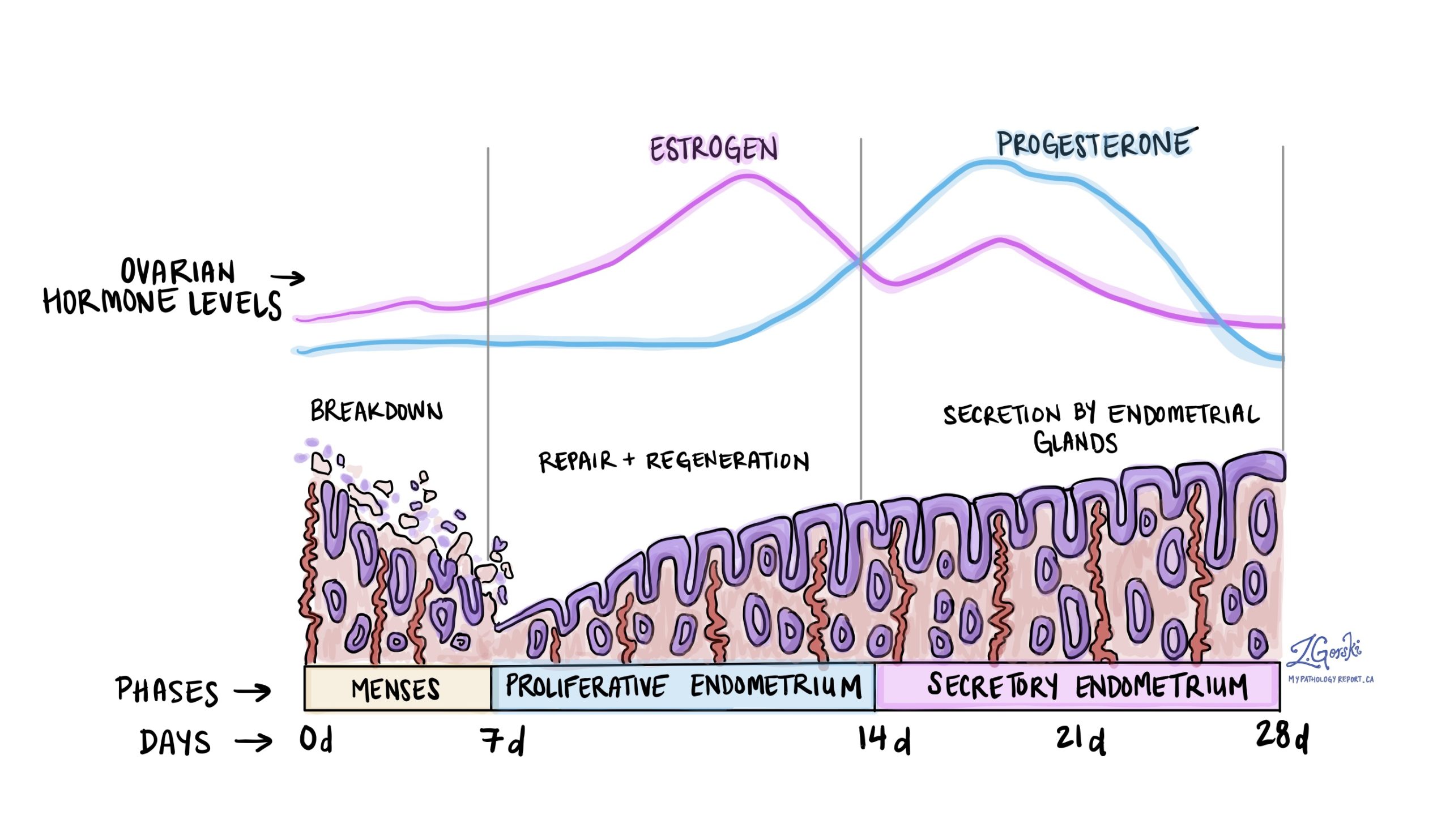by Adnan Karavelic MD FRCPC
April 4, 2024
Secretory endometrium is a term pathologists use to describe the changes seen in the endometrium during the second half of the menstrual cycle. It is a normal finding in women of reproductive age.

Is secretory endometrium normal?
Yes. Secretory endometrium is a normal finding in women of reproductive age.
What is the function of secretory endometrium?
The endometrium becomes secretory to produce the substances necessary to support the implantation of an egg should conception occur.
What causes the endometrium to become secretory?
After ovulation, the endometrium grows under the influence of progesterone. During this phase, the endometrial glands become long and twisted, and the secretion starts. Pathologists call this phase the secretory.
How is this diagnosis made?
The diagnosis is usually made after a small sample of tissue is removed from the endometrium during a procedure called an endometrial biopsy or uterine curetting.
Common reasons for these procedures include:
- Abnormal (dysfunctional) uterine bleeding.
- Postmenopausal bleeding.
- Screening for endocervical or endometrial cancer.
- Endometrial dating.
- Follow-up of previously diagnosed endometrial hyperplasia.
- Endometrial or endocervical polyps.
- Infertility.
What if my report includes a post-ovulation day (POD)?
The microscopic changes in the endometrium allow your pathologist to determine how many days it has been since ovulation occurred. This information is called the post-ovulation day and it is especially important for women trying to become pregnant. You may see the post-ovulation date described in your report.


